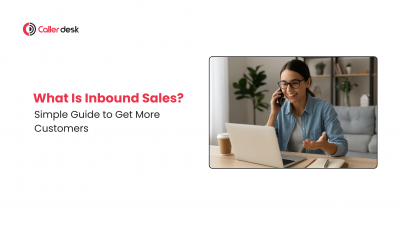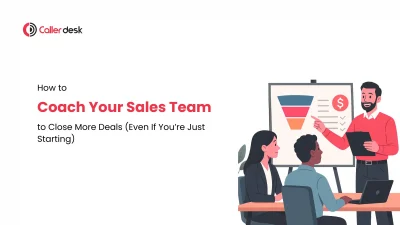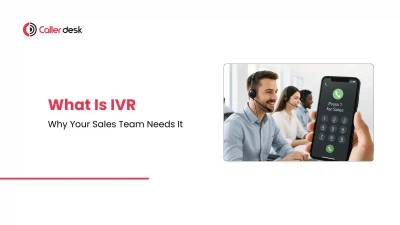Let’s keep it simple.
When someone fills out a form on your website, they’re interested in what you offer.
But here’s the catch—they’ve probably filled out forms on 2–3 other websites too.
Now it has become a race.
Whoever calls them first has the best chance of turning that lead into a customer.
That’s why speed-to-call is one of the most important things in sales today.
It’s not just about calling—it’s about how quickly you call.
If you wait too long:
- The lead forgets who you are
- Their interest drops
- Someone else may call and close the deal before you
On the other hand, when you call fast:
- You grab their attention while they’re still thinking about you
- You show that their time matters
- You instantly build trust by being responsive
This blog explains why calling leads faster increases your chances of making a sale—and how you can start doing it right away.
What the Data Says About Call Speed
Let’s look at why calling leads faster can make such a big difference in your sales.
According to a study by Lead Response Management, when you call a lead within 5 minutes, you are:
- 21 times more likely to qualify the lead
- 100 times more likely to connect with them
- More likely to book a meeting or start a conversation on the first attempt
That’s huge. But why does this happen?
Here’s what’s going on behind the scenes:
1. The lead is still thinking about your product or service
They just visited your website or filled out a form. You’re fresh in their mind. If you call now, the conversation feels natural and timely.
2. They haven’t been distracted yet
After a few minutes, people move on. They check other websites, get into meetings, or scroll on social media. The faster you call, the more attention you get.
3. You show that you’re professional and serious
Calling fast sends a strong signal:
“We care. We’re here. You’re important to us.”
That builds trust before the conversation even begins.
What Slows Most People Down When Calling Leads?
Many businesses lose leads just because they wait too long to make the first call. But why do they wait?
Here are some common reasons:
1. They try to research everything
Some salespeople want to know every small detail about the lead before calling—like their company, job role, and full background.
This takes a lot of time, and most of it isn’t even needed for the first call.
2. They want to be “fully ready”
They spend time planning what to say, writing scripts, and trying to sound perfect.
But in trying to sound perfect, they delay the call—and often lose the lead.
3. They send an email first
Some think it’s better to email before calling. But by the time the person sees the email and replies (if they do), the chance to connect may already be gone.
4. They don’t get alerts instantly
In many cases, teams don’t even know a new lead has come in. If there’s no system to notify them right away, they respond too late.
The Reality: Most Leads Don’t Pick Up on the First Try Anyway
Yes, it’s true. Most people won’t answer your call the first time.
So if you’re spending 15–20 minutes preparing for each call, that’s time you could have used calling 3–4 more leads.
Benefits of Quick Follow-Up Calls
You might wonder, “What’s the big deal about calling fast?”
Here’s the answer in simple words:
1. People remember you better when you call quickly
Right after someone fills out your form, they still remember what your business is about. If you call within a few minutes, they know who you are. But if you wait too long, they might forget or even talk to someone else.
2. Fast response shows that you care
When you call someone quickly, it tells them you value their time and are serious about helping. This creates trust and makes a great first impression.
3. You don’t give competitors a chance
If another company calls them before you, they may win the deal. When you’re the first to call, you get the first chance to talk and build a connection.
4. Quick calls feel more natural and friendly
If you wait too long, you may overthink and sound too robotic. But if you call right away, your tone feels relaxed, and the conversation flows better.
5. You find serious leads faster
Not everyone who fills out a form is ready to buy. When you call them quickly, you’ll quickly know who is actually interested and who isn’t. This saves time and helps you focus on real customers.
Tips to Respond to Leads More Effectively
1. Take 1 Minute to Check the Lead
Before calling, take a quick look at:
- Their name
- The company they work for
- What they wrote in the form
That’s all you need.
No need to search the whole internet about them.
Just get a basic idea so the call feels personal.
2. Call Them Within 1 to 2 Minutes
As soon as you check the details, make the call.
Don’t wait for 10 or 15 minutes.
Try to call in the first 1–2 minutes, or at least within 5 minutes.
This shows the person that you’re serious and quick to respond.
3. Talk Like a Normal Human
When they answer:
- Say hello politely
- Tell them you saw their message or form
- Ask how you can help them
Use their name. Mention something they wrote.
This makes the call feel friendly and real—not like a sales pitch.
Conclusion
In sales, timing can change everything. When someone fills out your contact form, it means they’re interested right now—not hours later, not tomorrow.
If you call them while they’re still thinking about your product or service, you have a much better chance of turning that interest into a real conversation… and eventually, a customer.
But if you wait:
- Their attention fades
- They might talk to a competitor
- You miss your best chance to connect
That’s why calling fast isn’t just a good habit—it’s a sales strategy that works.
The faster you respond:
- The more trust you build
- The more leads you connect with
- The more time you save by finding serious buyers early
So, if you want to grow your business, stop waiting.
Pick up the phone—and do it fast.
Because in today’s world, speed doesn’t just help you sell. It helps you win.
And if you’re looking for a cloud telephony solution to help you respond faster and manage calls better—CallerDesk is the best choice.





